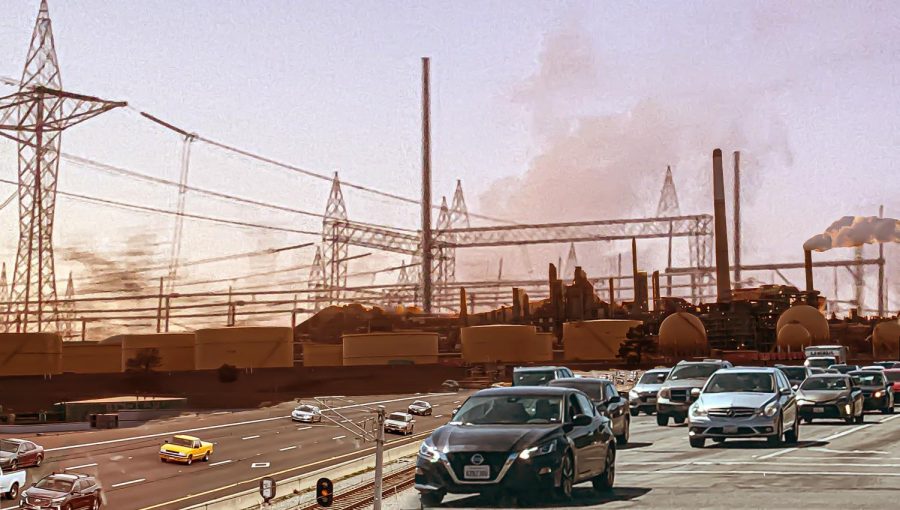OPINION: California’s ban on gasoline-powered cars is not so green
California issued a ban on gasoline-powered vehicles to combat the effects of climate change.
As a part of the State of California’s ambitious green goals, Gov. Gavin Newsom and the California Air Resources Board issued the ban on gasoline-powered vehicles by 2035. This would ultimately replace gas vehicles with electric vehicles within the next 13 years. However, it comes with the risk to the state’s energy security. While California might have good intentions in mind, its electrical grid might not hold up under the duress of future climate impacts, exacerbating existing issues with its grid.
During the first week of September, a scorching heat wave left a branding mark on the populace that showed the damages of climate change. The scorching heat forced many to use cooling devices as the demand for power nearly exceeded the capacity of the state grid. On Sept. 6 and 7, the California Independent System Operator had to order an Emergency Alert 3, requesting people to lower their power usage. If the demand could not be reduced, the big three utility companies would have to resort to rolling blackouts in neighborhoods across the state.
According to CAISO, its highest peak was at 52,601 megawatts, surpassing the highest record of 50,270 MW made 13 years ago. The aging energy infrastructure was not designed to output so much power from a heatwave of over 100 degrees Fahrenheit, and the excessive demand almost sent portions of the state into the dark. Even with the activation of the Roseville and Yuba City emergency generators, the grid was barely able to hold the line.
California’s energy infrastructure was designed for an earlier time with less extreme conditions. If the state is to commit to the ambitious net-zero goals, both the government and the populace must work together to improve energy storage and production. The solution to a capacity issue with renewable energy is the use of lithium-ion battery energy storage systems. These storage systems are capable of storing excess energy temporarily for periods of time before cycling out to the main grid. According to the National Renewable Energy Laboratory, “Distribution-level BESS systems can also provide local power quality services and support improved resilience during extreme weather events.” The adoption of more storage systems could improve production capacity during high-peak hours and during events of extreme weather.
With the Russo-Ukrainian war showing the struggles of humanity’s mass adoption of fossil fuels, California must be prepared to utilize alternative means of power production. Solar and wind power do not provide solid support as they are affected by weather conditions. Hydropower is not a feasible option due to the severity of droughts and water scarcity. While geothermal power is sustainable year-round, it cannot be built anywhere, instead relying on a natural facet of thermal energy to be in a region. Nuclear power, however, is both efficient and sustainable, and it can be built anywhere to support the grid.
In a Department of Energy article “Nuclear Power is the Most Reliable Energy Source and It’s Not Even Close,” nuclear energy was rated at 92.5% as the highest capacity factor. Geothermal power ranked 74.3%, and natural gas 56.6%. If the Department of Energy endorses nuclear power, then the state should move to rapidly adopt and integrate into its systems.
The attempts to close the Diablo Canyon Nuclear Power Plant, under the pretense of environmental safety, should not be allowed until California has made improvements in infrastructure and sustainable energy production outcomes. Environmentalists deeply rooted in the removal of the plant must understand Diablo Canyon’s crucial role in energy security. If the state is to accelerate its motion toward a greener phase, then its people must be prepared to support the transition with stable foundations.


